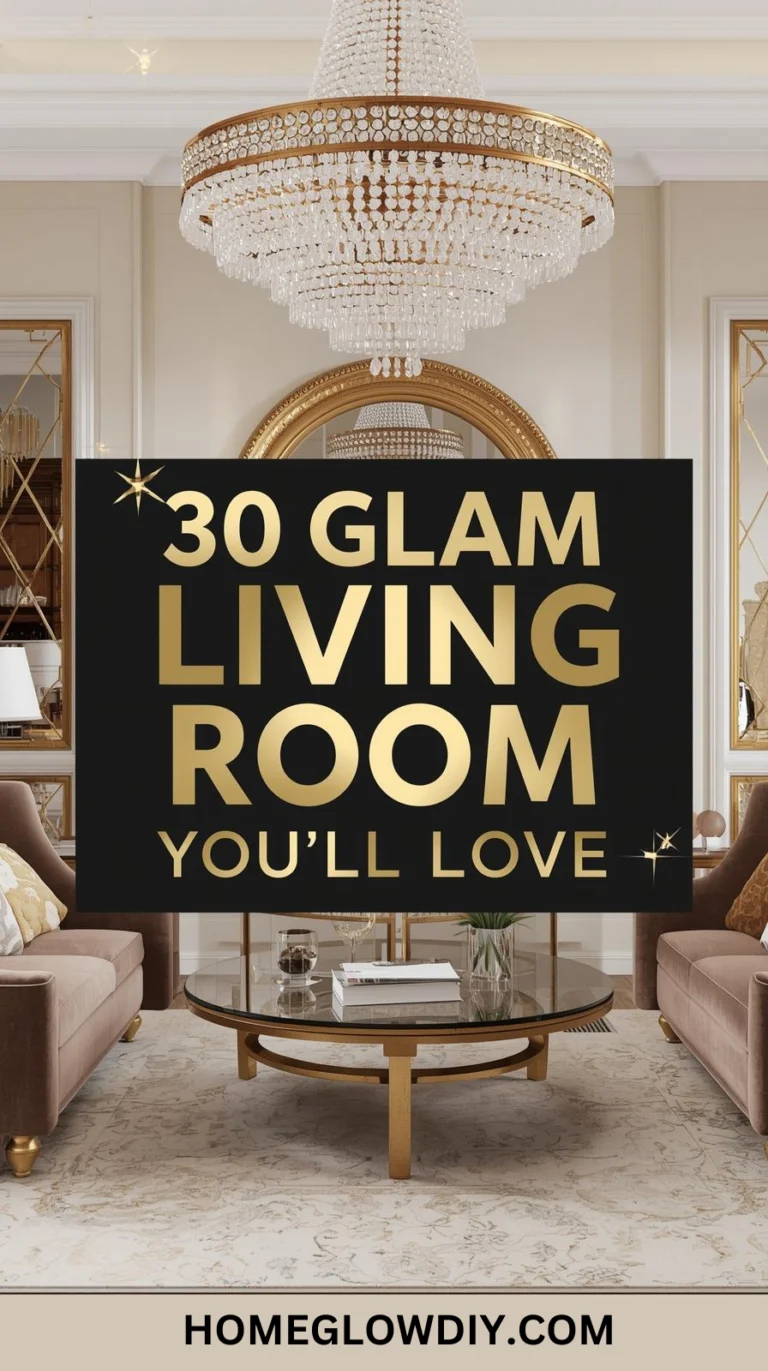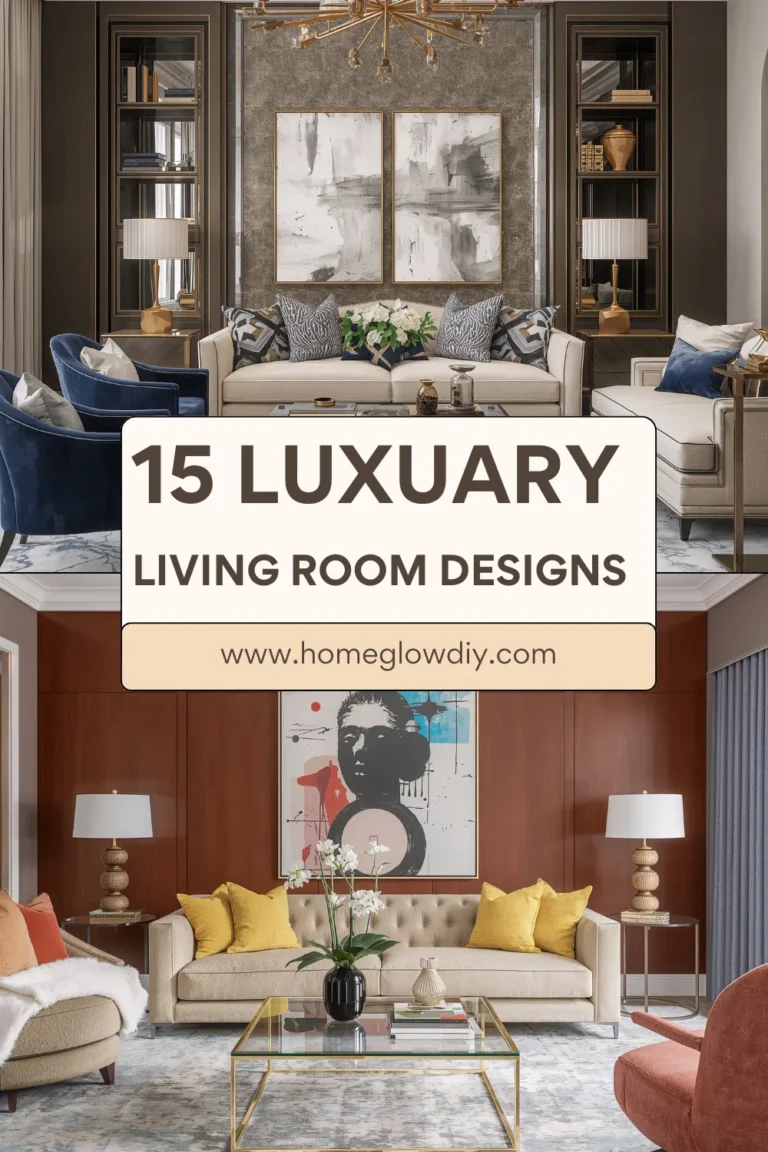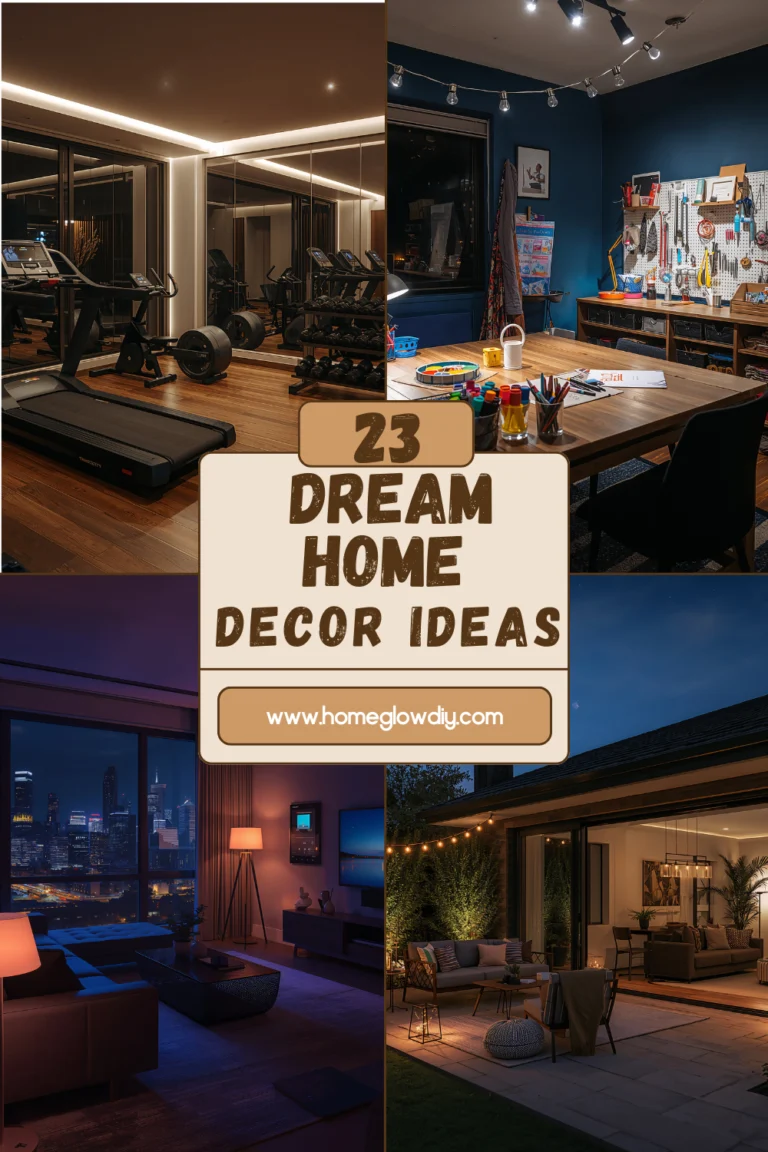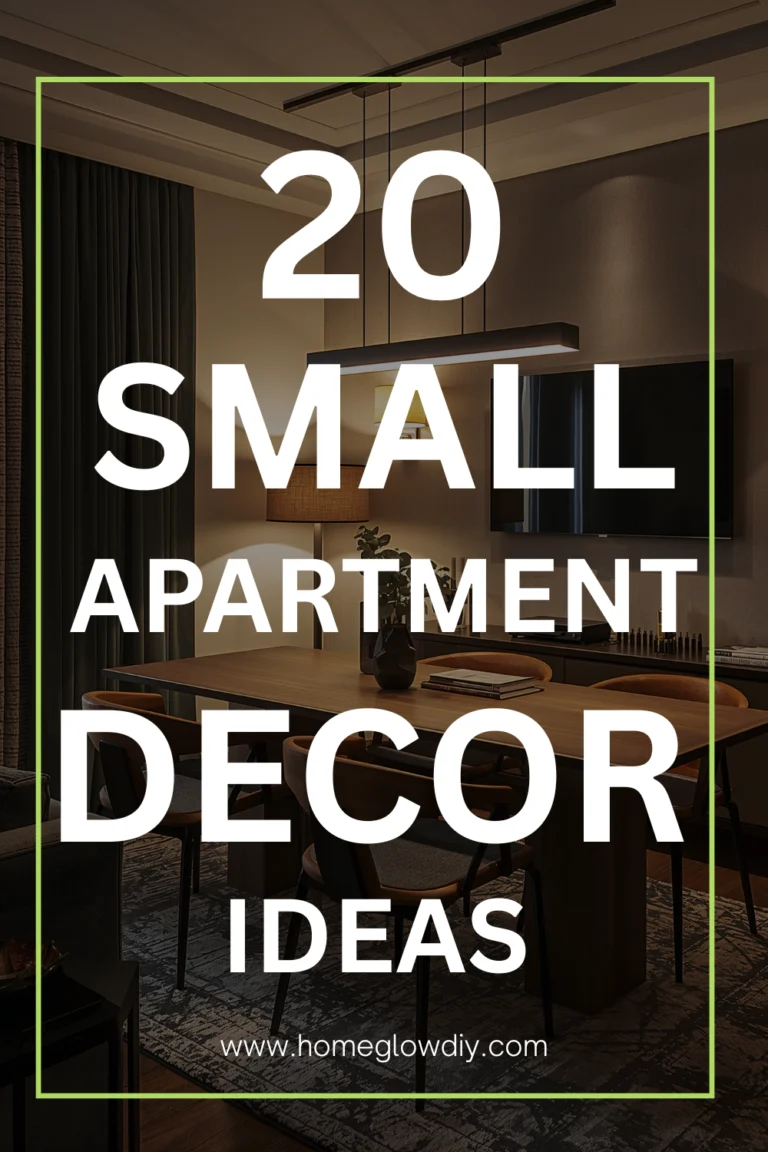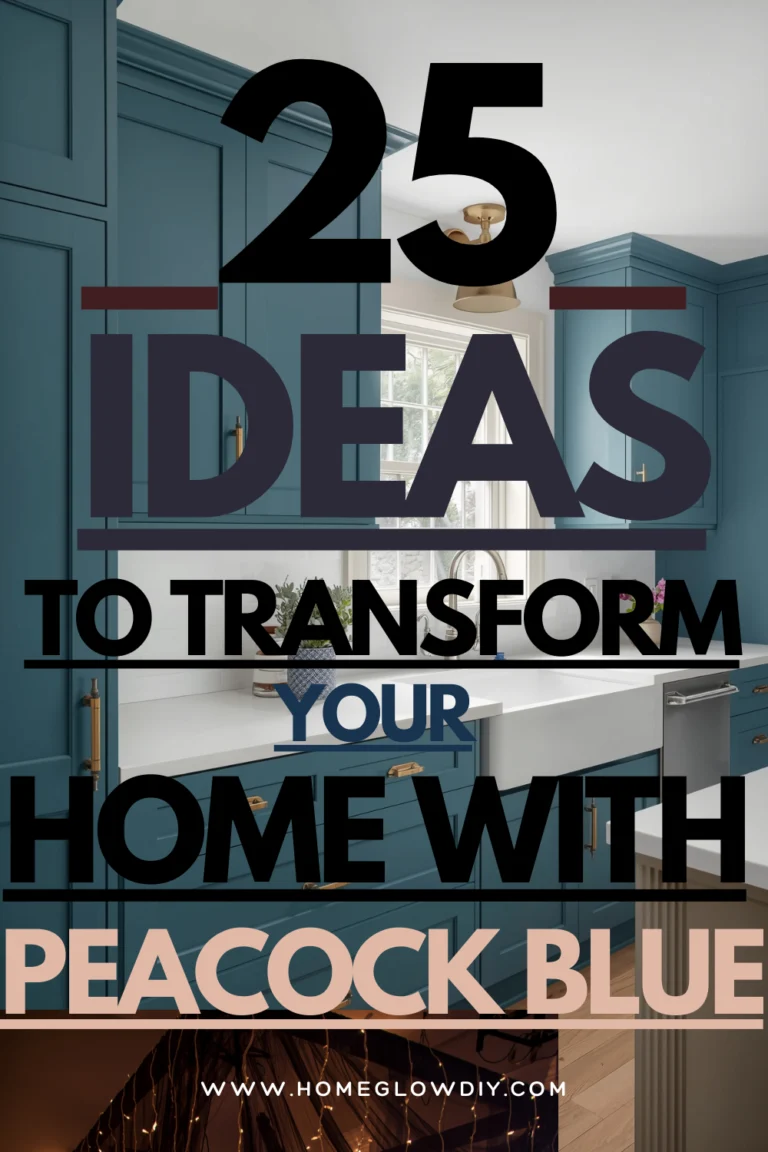Outdated Home Trends You Should Avoid
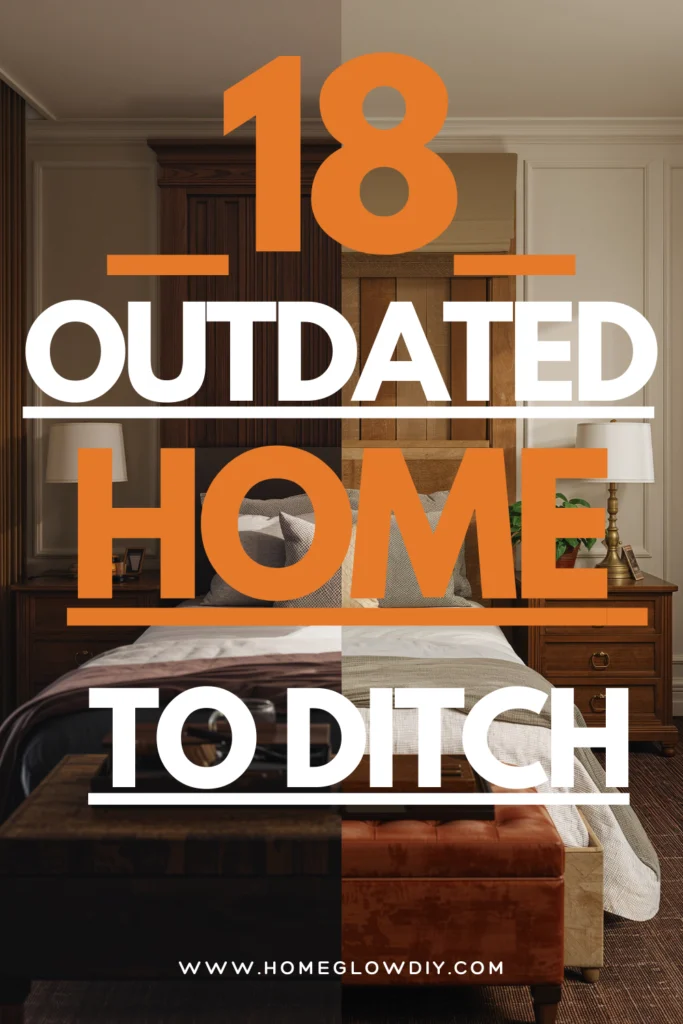
Interior design is always evolving, and what once felt stylish can quickly become dated. Many homeowners in the USA are now rethinking their choices, realizing that certain design decisions not only age a space but also make it harder to sell or update later. Understanding outdated home trends is the first step to creating a space that feels timeless, fresh, and welcoming. In this article, we’ll cover 18 outdated home trends, why they no longer work, and how you can replace them with modern, practical alternatives that suit today’s lifestyle.
1. Wall-to-Wall Carpeting
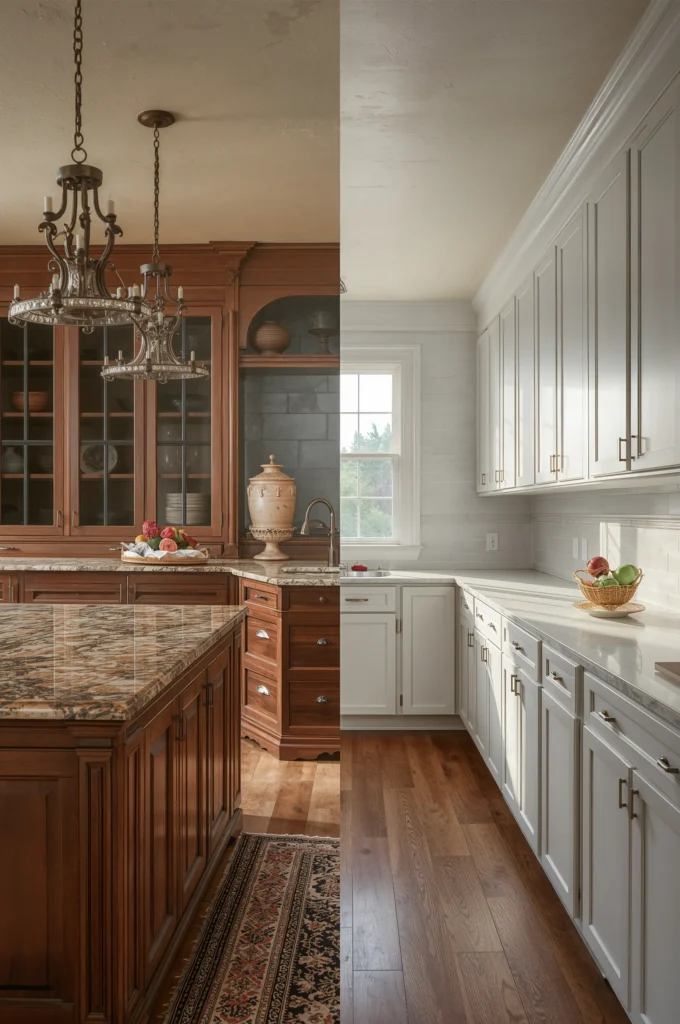
One of the most obvious outdated home trends is wall-to-wall carpeting, especially in living rooms and bedrooms. While carpet once symbolized comfort and warmth, it’s now considered impractical because it traps dust, allergens, and odors. Today’s homeowners prefer hardwood floors, luxury vinyl planks, or laminate flooring, which are easier to clean and give rooms a polished look. If you love softness underfoot, consider adding large area rugs instead of permanent carpeting. Rugs are easier to replace when styles change, and they also allow you to bring color or texture into your space without committing long-term. To modernize a carpet-heavy home, start by removing old carpets in high-traffic areas and replace them with wood or wood-look flooring. This instantly makes your space feel updated and more desirable to potential buyers.
2. Overly Matchy Furniture Sets
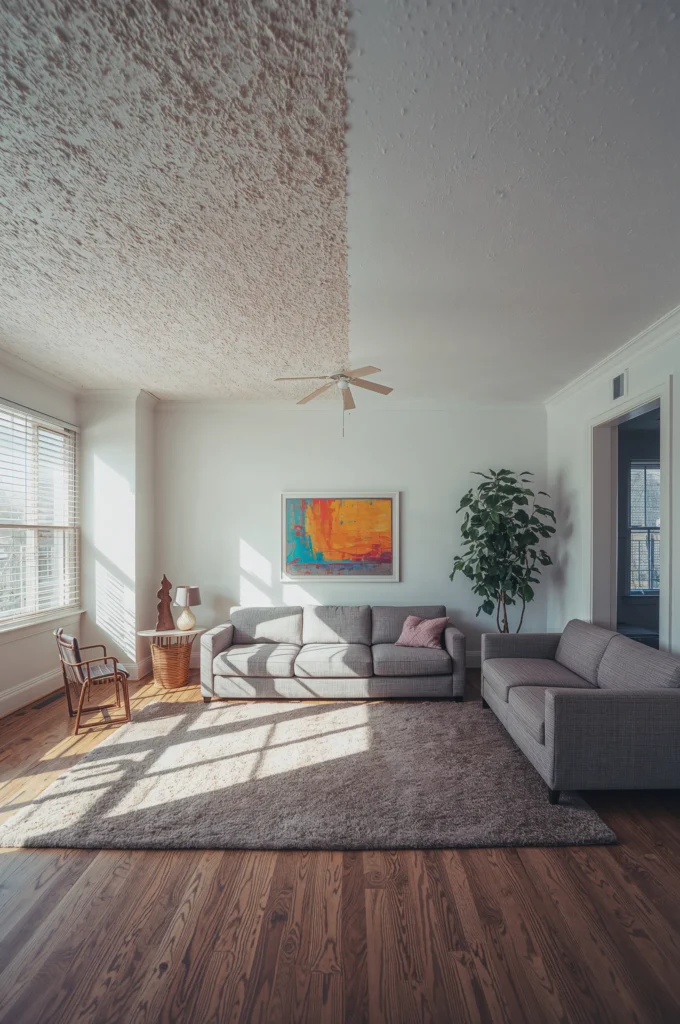
Buying a full matching furniture set used to be a go-to choice for many households, but today it screams outdated home trends. Rooms filled with identical sofas, chairs, and tables lack character and personality. Instead of looking curated, they appear staged and uninspired. The modern approach is mixing pieces that complement each other without being identical. For example, pair a leather sofa with a fabric accent chair, or use a rustic wood coffee table with sleek metal side tables. This creates visual interest and makes your space look more organic. If you already own a matching set, consider swapping out one or two pieces, like replacing matching chairs with bold accent chairs or adding a textured ottoman. Blending styles not only updates your home but also tells your personal story through design.
3. Popcorn Ceilings
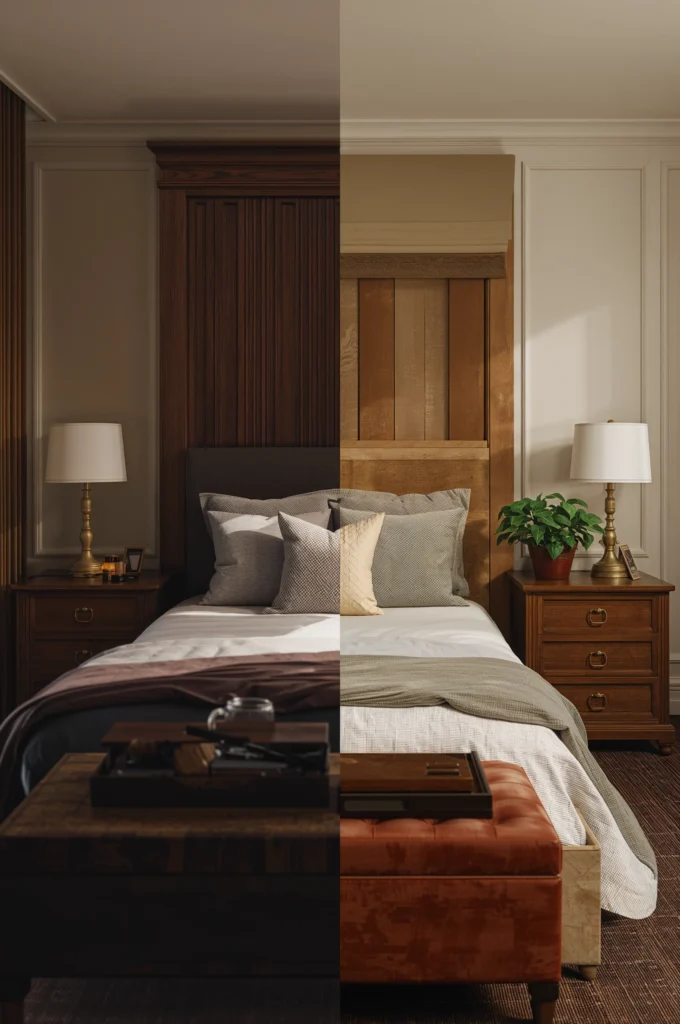
Popcorn ceilings were once thought to add texture and hide imperfections, but now they’re one of the most disliked outdated home trends in the USA. They collect dust, make rooms look dated, and even lower resale value. Removing a popcorn ceiling is one of the best investments you can make for a modern update. If the ceiling contains asbestos, hire a professional for safe removal. Once cleared, consider repainting the ceiling in a crisp white or soft neutral tone for a cleaner look. Smooth ceilings instantly brighten the space and make it look larger. For added style, install ceiling beams, tongue-and-groove planks, or even subtle molding. These upgrades are not only timeless but also add character without overwhelming the space.
4. Tuscan-Inspired Kitchens
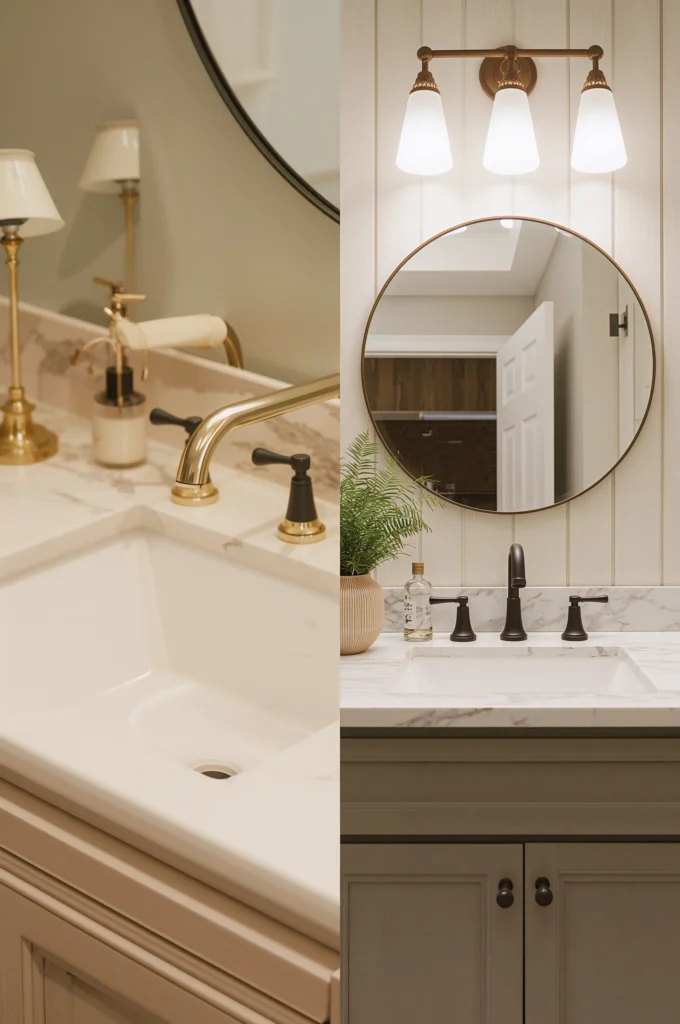
Dark wood cabinets, ornate details, and heavy granite countertops defined the Tuscan kitchen trend of the 2000s. Today, these kitchens are widely seen as outdated home trends because they make the space feel heavy and closed-in. Modern kitchens are moving toward lighter, brighter finishes like white oak cabinets, quartz countertops, and matte fixtures. To refresh a Tuscan-style kitchen without a complete renovation, consider painting dark cabinets in a light neutral, replacing hardware with sleek matte black or brushed brass, and introducing open shelving for a more airy feel. Updating lighting is also key—swap heavy iron chandeliers for simple glass pendants or LED track lighting. These small changes can take a Tuscan kitchen from outdated to current without breaking the bank.
5. Overly Themed Décor
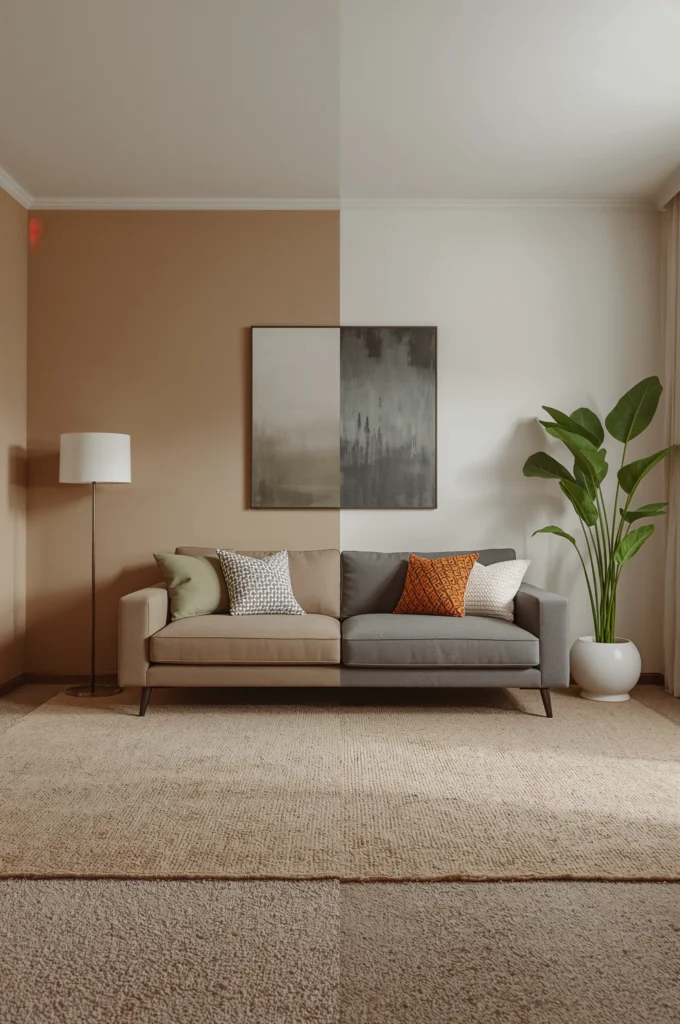
Another outdated home trend is decorating a room entirely around a single theme, such as nautical, farmhouse overload, or Parisian chic. While a few themed accents can be fun, too much of one idea quickly feels gimmicky. Modern design favors subtle nods to themes rather than over-the-top displays. For example, instead of covering your living room with anchors and seashells, try adding coastal-inspired colors like soft blues and sandy neutrals with just a few shell accents. If you love farmhouse style, keep the shiplap and natural wood but avoid the cliché signs that say “Farm Fresh” or “Gather.” A balanced approach makes your décor feel sophisticated rather than forced, while still reflecting your personal taste.
6. Heavy Drapes and Curtains
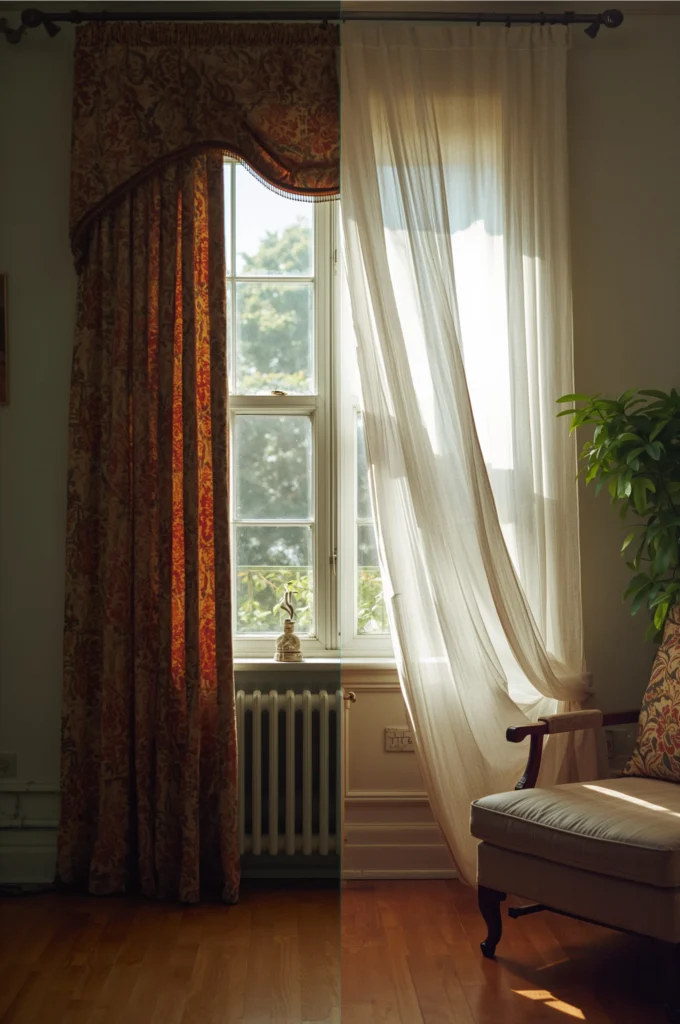
Thick, ornate drapes were once a status symbol, but today they’re one of the clearest outdated home trends. They block natural light, make rooms feel smaller, and often look fussy. Modern homeowners prefer lighter window treatments such as linen curtains, Roman shades, or simple roller blinds. These options allow more natural light while still providing privacy. To update your windows, start by removing heavy drapes and replacing them with neutral or light-colored fabrics. If you like drama, opt for floor-to-ceiling curtains in a breathable material. This creates height without weighing down the room. Natural light is one of the most desirable features in a home, so your window treatments should enhance, not block, it.
7. Granite Countertops Everywhere
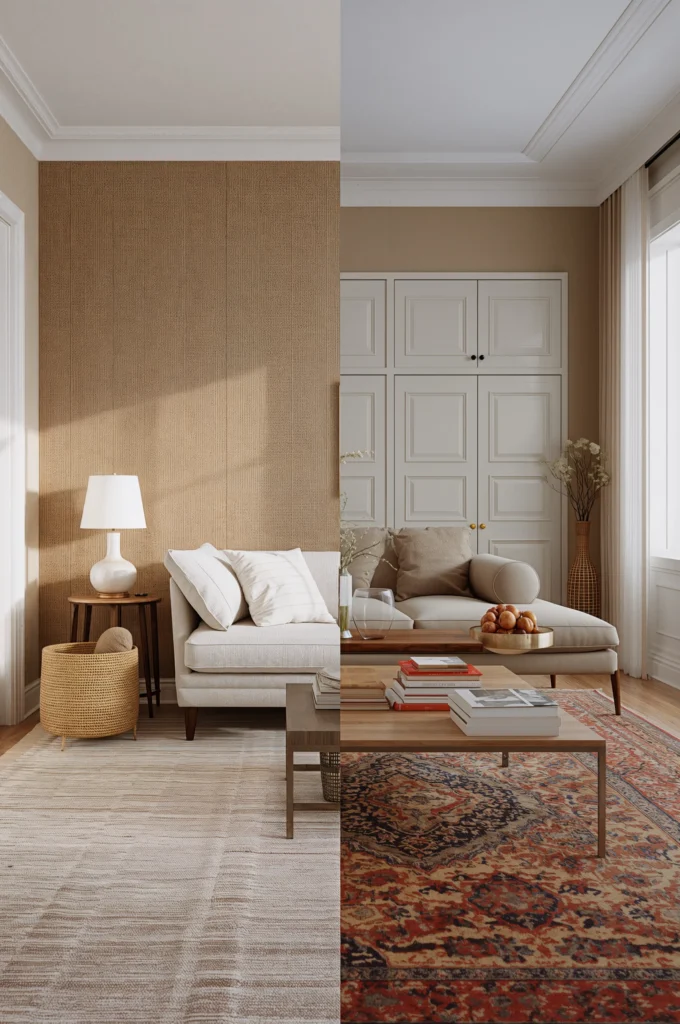
Granite once dominated kitchens and bathrooms, but it has become one of the most common outdated home trends. While durable, granite often feels overused and can make a kitchen look stuck in the 2000s. Today’s buyers and designers lean toward quartz, butcher block, or concrete countertops, which offer a fresher look. Quartz, in particular, has become the most popular choice because it’s durable, low-maintenance, and comes in a wide variety of colors and patterns. If replacing granite isn’t in your budget, consider refinishing or updating your backsplash to create contrast. A clean white subway tile paired with granite can make the stone look more intentional and less dated.
8. Fake Plants Everywhere
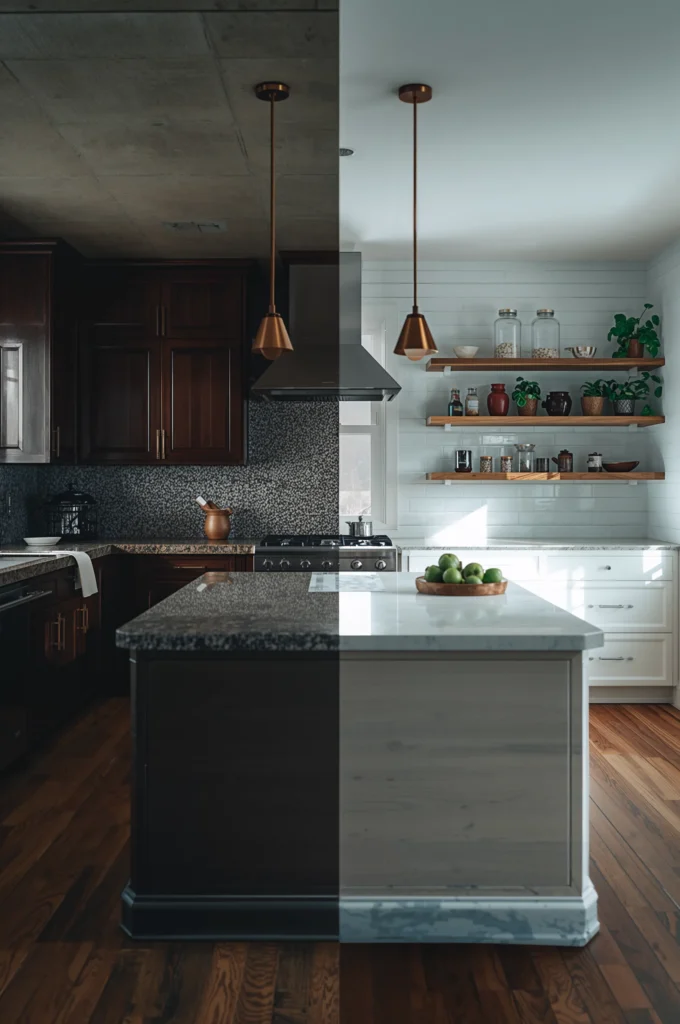
At one time, artificial plants were seen as a low-maintenance solution for adding greenery indoors. But today, filling a home with fake plants is considered an outdated home trend. While a single high-quality faux plant might work in a dark corner, too many fake plants make a space feel cheap and lifeless. The modern approach is using real, low-maintenance plants like snake plants, pothos, or succulents that thrive indoors. These plants purify the air and bring true vitality to your home. If you don’t have a green thumb, stick to a few easy-care plants in stylish pots. The goal is quality over quantity—fewer, healthier plants look far more modern than a house full of dusty fakes.
9. Open Shelving Overload
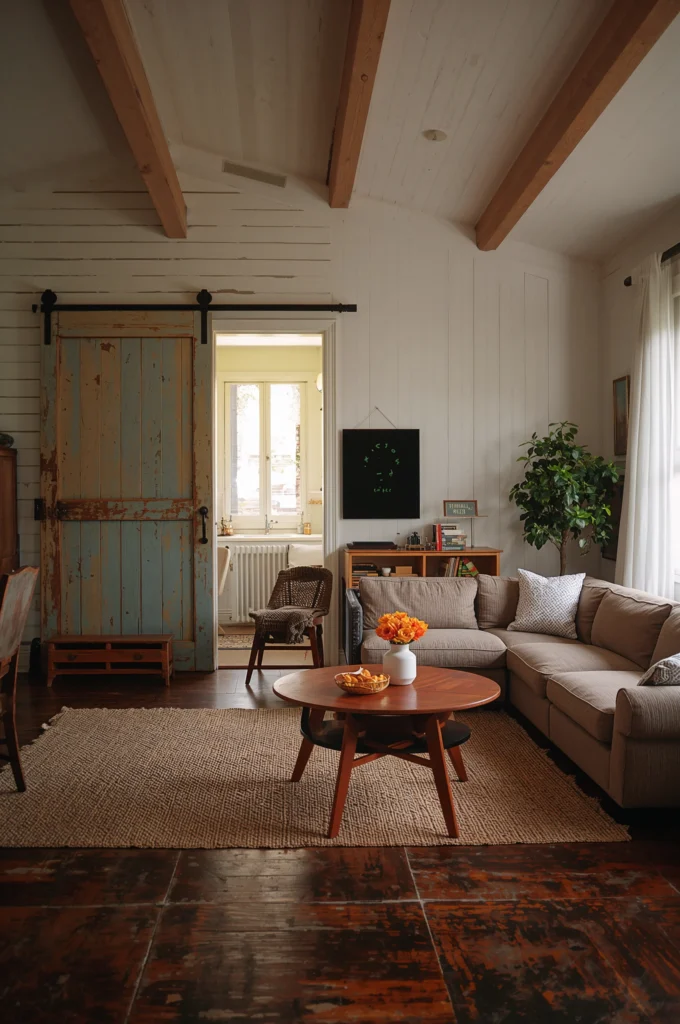
Open shelving started as a modern trend, but when overdone, it has now shifted into the category of outdated home trends. Entire kitchens lined with open shelves quickly become cluttered, making the space feel messy rather than styled. Instead, designers recommend a balance: mix closed cabinetry with just one or two open shelves to display your best pieces. This way, you get the airy, modern look without sacrificing storage or creating visual chaos. If you love open shelving, style it intentionally with matching dishware, a few plants, or neatly arranged baskets. Avoid overcrowding the shelves, and let negative space do some of the work.
10. Accent Walls in Bold Paint
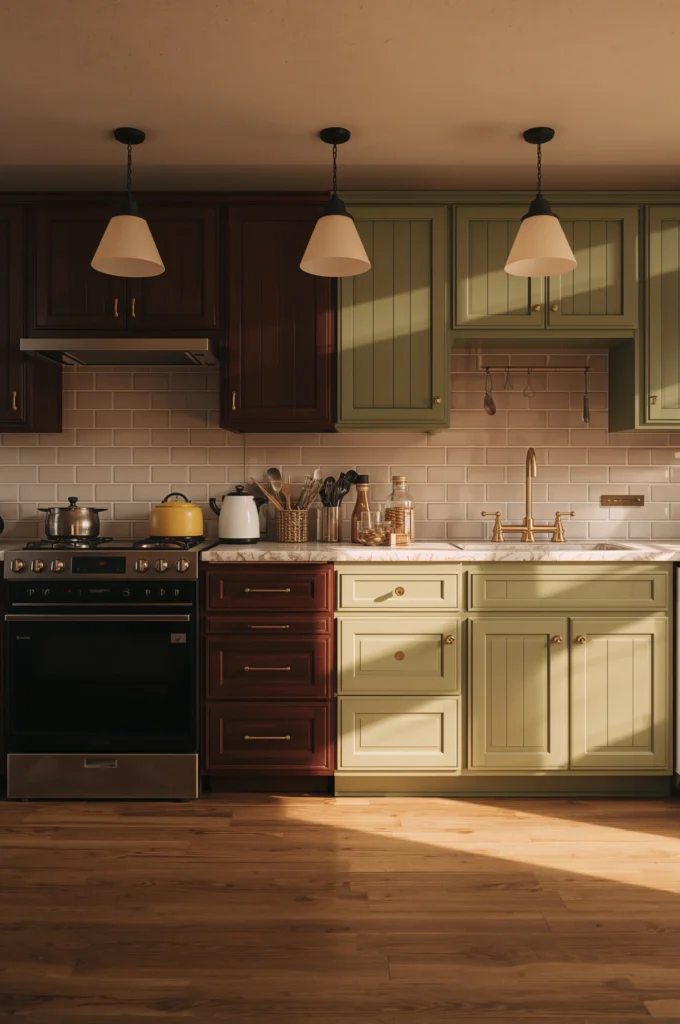
Painting one wall in a bold color while leaving the others neutral was a popular trick for years, but it’s now one of the more obvious outdated home trends. Accent walls often feel unfinished and can make a room look dated. The modern alternative is embracing color across the entire room or using texture, such as wallpaper or wood paneling, for a more sophisticated accent. For example, a moody navy dining room feels bold yet timeless compared to a single navy wall in an otherwise beige space. If you still like the idea of accents, consider creating one with natural materials like stone or reclaimed wood. This adds depth and character without feeling like a shortcut.
11. Massive Jetted Tubs
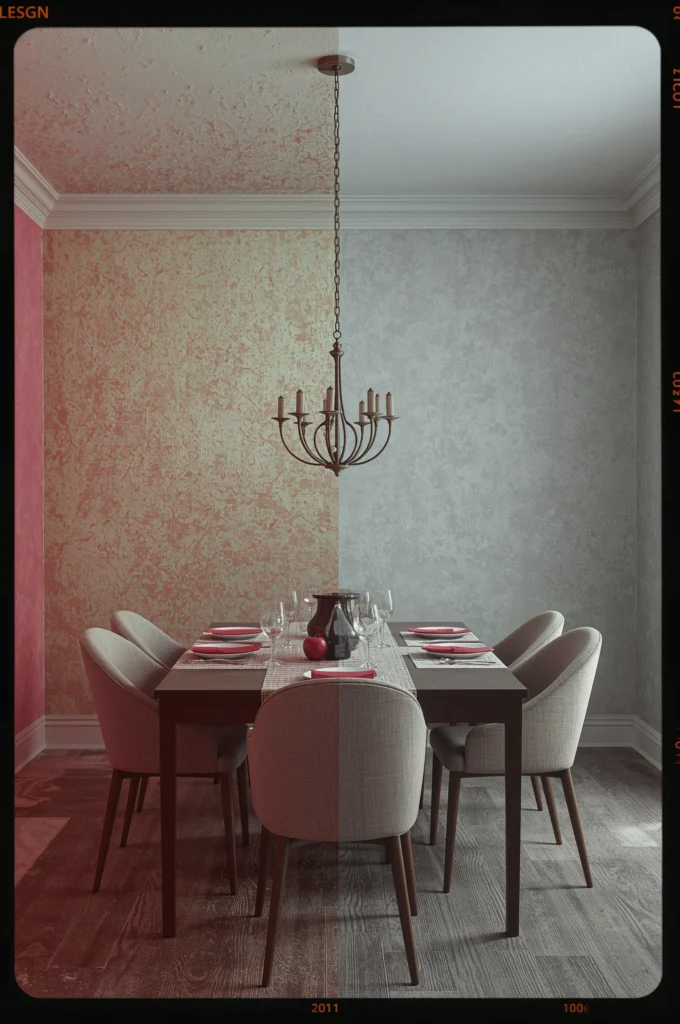
Large jetted tubs were once a selling point in luxury homes, but they’ve now become outdated home trends. They take up enormous bathroom space, are rarely used, and are difficult to clean. Modern homeowners prefer walk-in showers with rainfall showerheads, frameless glass enclosures, and built-in niches for storage. Showers are practical, stylish, and better for resale value. If you currently have a large tub that dominates your bathroom, consider removing it and replacing it with a spacious shower. For those who still enjoy soaking, a sleek freestanding tub is a more updated option that saves space while maintaining luxury.
12. Overuse of Gray
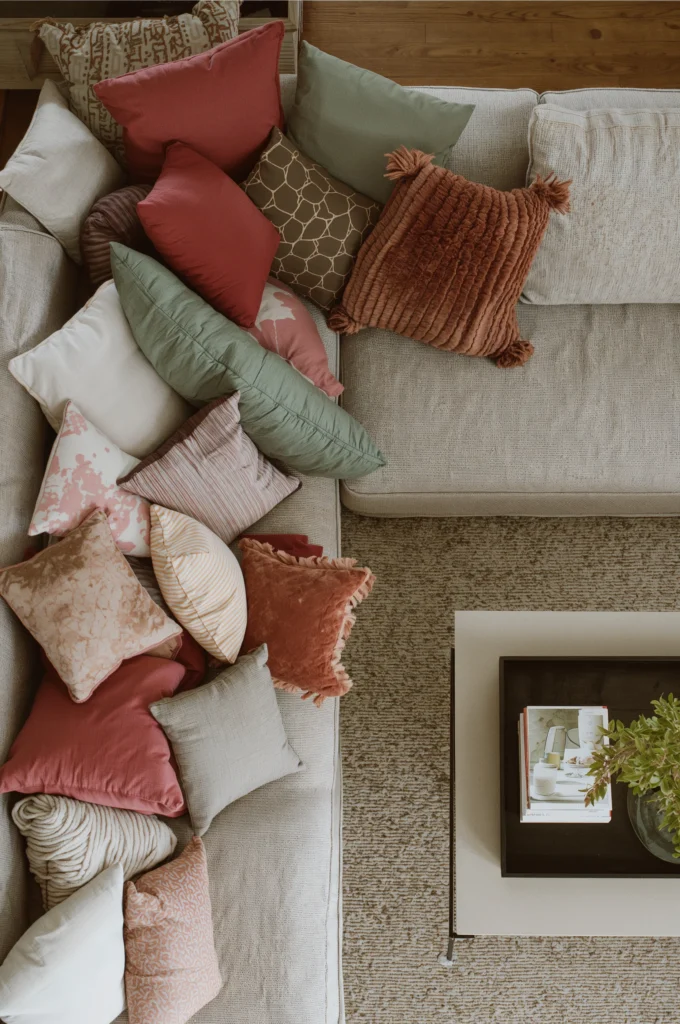
For nearly a decade, gray was the go-to color for walls, furniture, and flooring. But now, the all-gray look has officially become one of the biggest outdated home trends. While gray can still be stylish when used sparingly, entire rooms in cool gray tones feel cold and uninviting. Today’s interiors are leaning toward warmer neutrals like beige, greige, and creamy whites, along with earthy tones such as terracotta and olive green. If your home is overwhelmed by gray, start by repainting key rooms in warmer shades. You don’t have to eliminate gray entirely—just balance it with natural textures and pops of color to create a cozier feel.
13. Shiny Brass Fixtures from the 90s
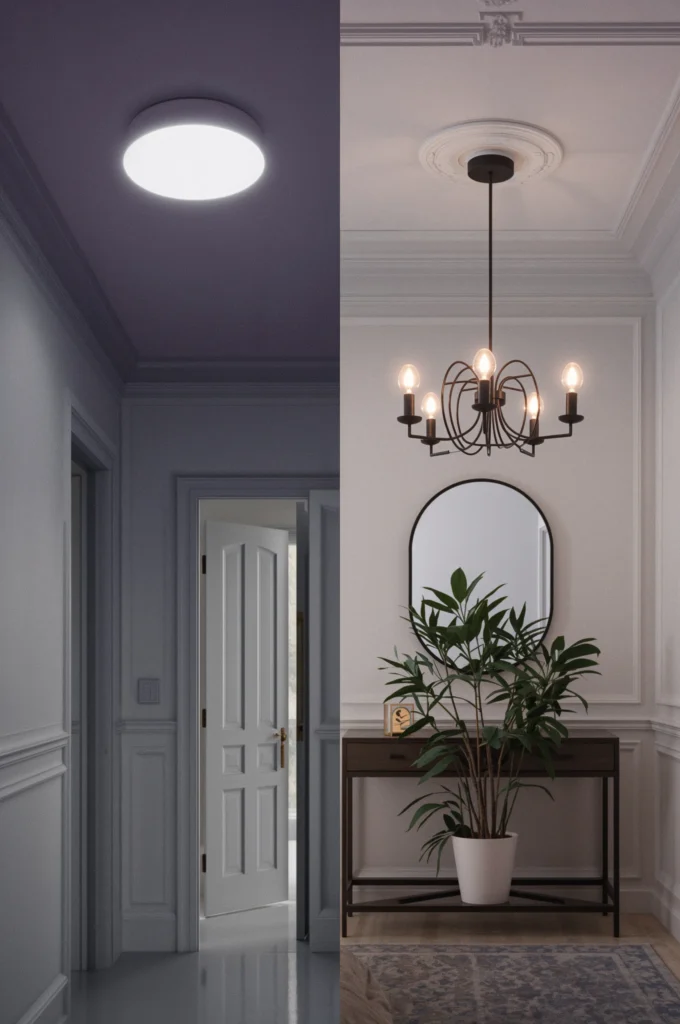
Polished brass dominated bathrooms and kitchens in the 1990s, but today it ranks high on the list of outdated home trends. The overly shiny, yellow-gold tone feels harsh and cheap compared to modern finishes. Instead, homeowners now gravitate toward brushed brass, matte black, brushed nickel, or oil-rubbed bronze. These finishes have a more sophisticated, timeless appeal. Swapping out faucets, cabinet handles, and light fixtures is one of the easiest upgrades you can make to instantly modernize your space. If you’re worried about cost, start small by replacing cabinet hardware in the kitchen or updating a bathroom faucet. Mixing metals is also a growing trend—you don’t have to stick to just one. For example, matte black cabinet pulls paired with a brushed brass light fixture create a stylish balance. Updating outdated brass details is a small change with a big impact.
14. Shag Carpets and Overly Plush Rugs
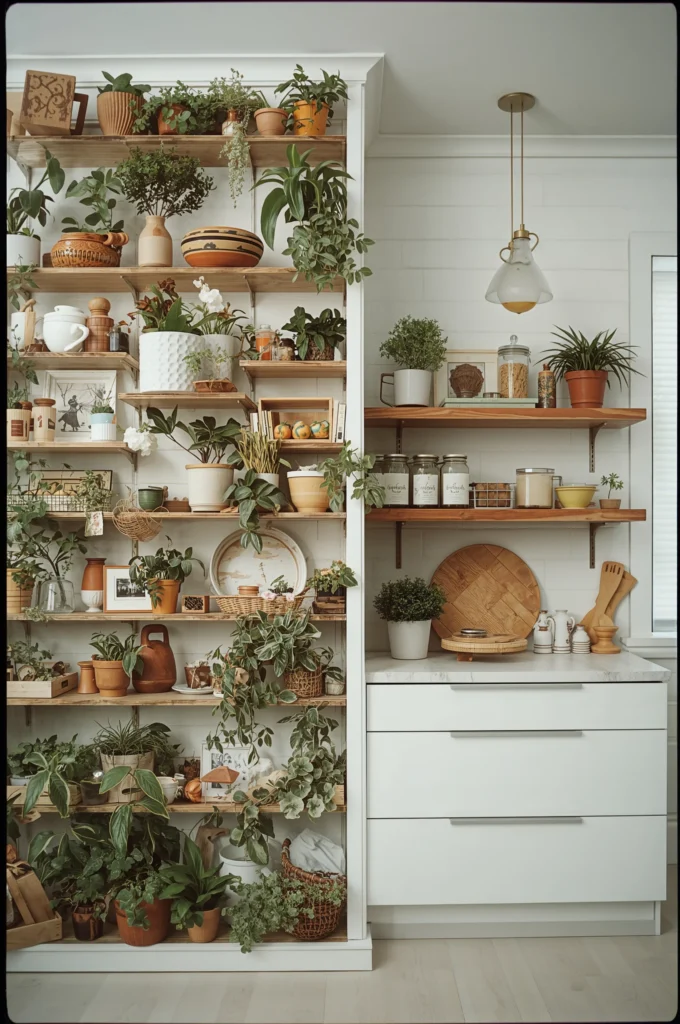
Shag carpets and thick, plush rugs were once symbols of comfort, but they’ve shifted into outdated home trends because of their impracticality. They trap dirt, are difficult to clean, and quickly look worn. Modern homeowners prefer flatweave rugs, low-pile area rugs, or natural fiber rugs like jute and sisal. These options add texture and warmth without overwhelming the room. If you still love softness, layer a low-pile rug over a flatweave base or add cozy throws and cushions to seating areas. Rugs today are meant to enhance a room’s style, not dominate it. Neutral patterns, geometric designs, and earthy tones are especially popular in the USA right now. Updating your rugs is a simple way to refresh a room without major renovations, moving you away from the dated “shag” look.
15. Overloaded Gallery Walls
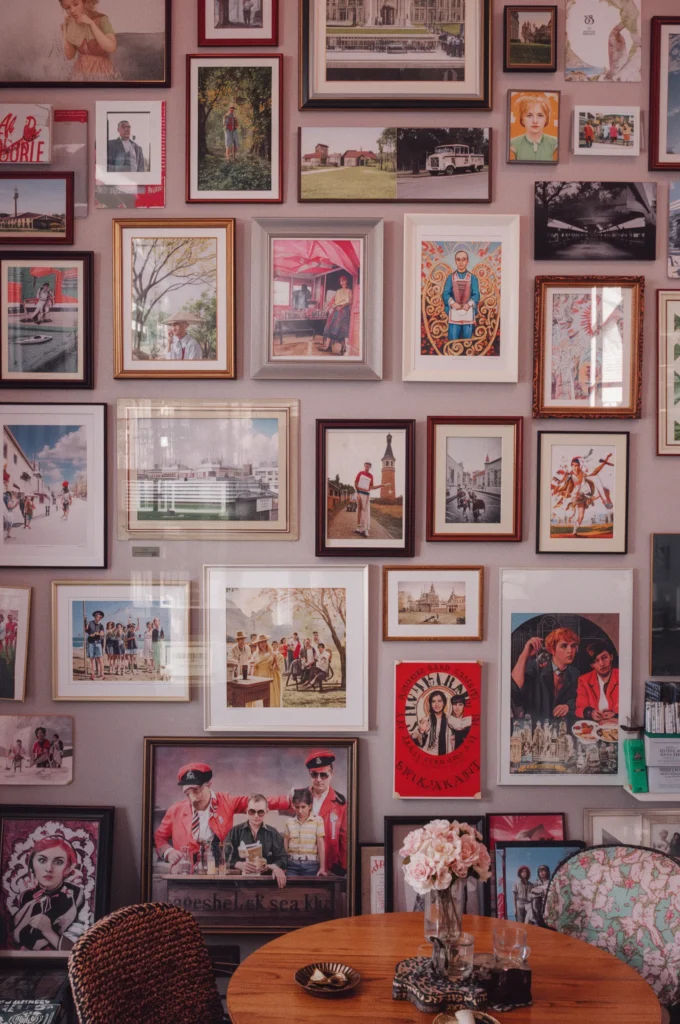
Gallery walls filled with dozens of frames were once a creative way to display personality, but now they’re among the most overdone outdated home trends. When overstuffed, these walls look chaotic and distracting instead of stylish. The modern approach is curating fewer, larger art pieces that make a stronger statement. For example, a single oversized abstract painting can create more impact than 15 small photos. If you still love displaying family memories, opt for a clean grid layout with matching frames in a neutral color. Another option is leaning art against a wall or placing it on a shelf for a relaxed vibe. Editing down your gallery wall creates breathing room, allowing each piece to shine. Less truly becomes more when it comes to modern wall décor.
16. Overuse of Barn Doors
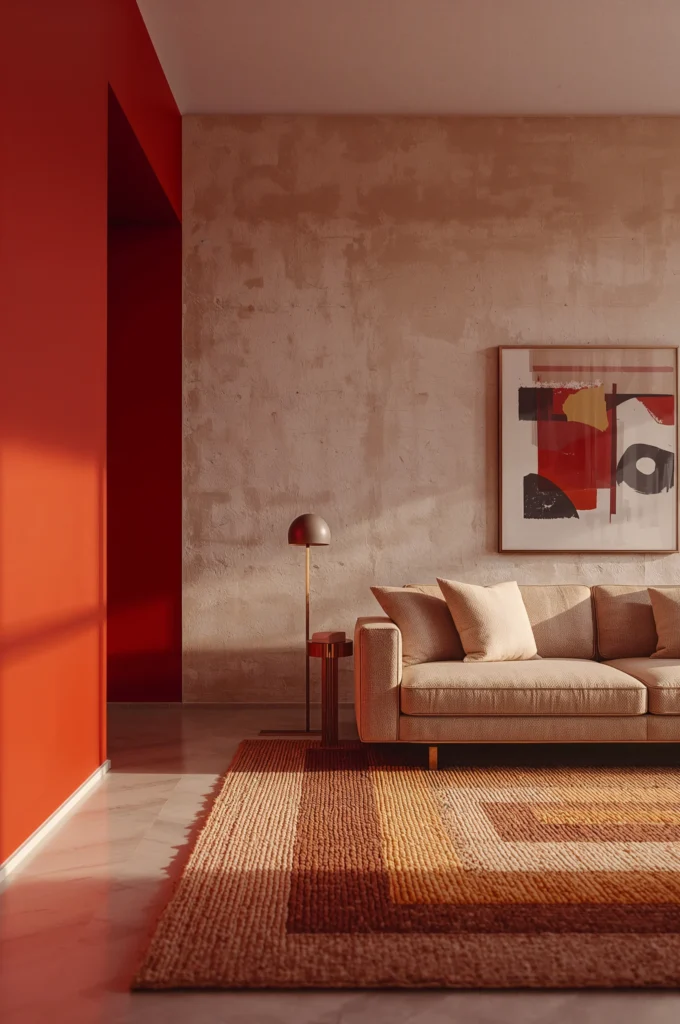
Barn doors surged in popularity with the farmhouse trend, but they’re now seen as one of the more obvious outdated home trends. While functional, they often clash with modern interiors and feel out of place in smaller homes. Barn doors also lack soundproofing and privacy compared to traditional doors. A more updated alternative is pocket doors, which save space while looking clean and modern. If you love the charm of barn doors, consider using them in less formal areas like pantries or laundry rooms, rather than bedrooms or living rooms. Another option is choosing sleek sliding doors with glass panels or minimalist wood finishes. These provide the same space-saving benefits without the dated farmhouse look. Replacing barn doors can instantly modernize your home and bring it in line with today’s design sensibilities.
17. Builder-Grade Light Fixtures
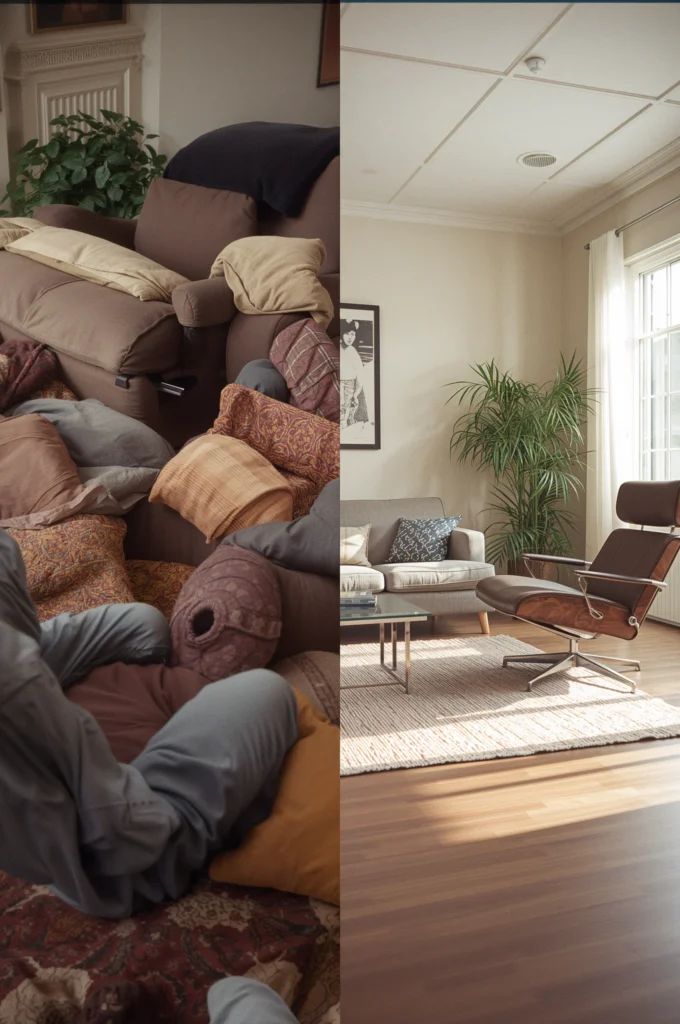
Many American homes still feature the standard “boob light” dome fixtures or basic builder-grade chandeliers, both of which are now outdated home trends. These lights do little to enhance a room’s style and often feel generic. Updating lighting is one of the fastest ways to modernize your space. Replace dome lights with flush mounts in modern finishes, or upgrade dining room chandeliers with bold, sculptural pendants. Layered lighting is also key—add sconces, floor lamps, or under-cabinet lighting to create dimension. Statement fixtures don’t have to be expensive; there are plenty of budget-friendly options that look designer-quality. Updating builder-grade lighting not only improves function but also transforms the overall atmosphere of your home.
18. Excessive Open Floor Plans
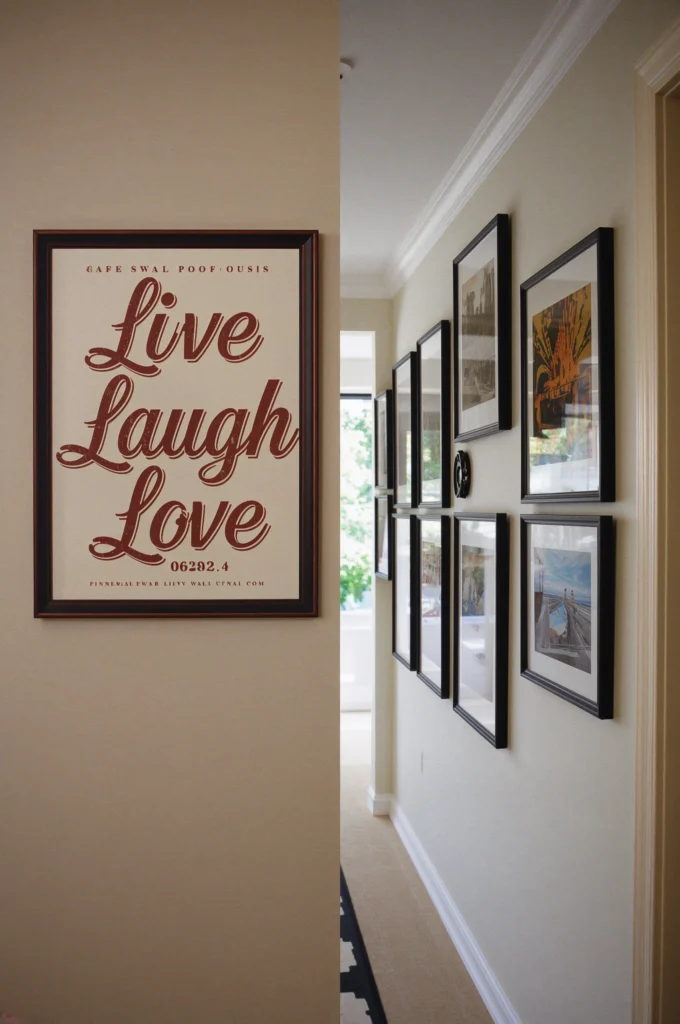
For years, open floor plans dominated new builds, but they’ve now become one of the more debated outdated home trends. While open layouts create spaciousness, they also remove privacy, limit wall space, and amplify noise. Since 2020, many families in the USA have realized the value of defined rooms for work, study, and relaxation. Instead of tearing down walls, today’s designs focus on partial openness with flexible zones. For example, wide cased openings or glass partitions allow light flow while maintaining separation. Using furniture, rugs, or shelving to define spaces also helps create structure. If you already have a wide-open layout, consider adding sliding partitions or double doors to give flexibility. The key is balance—spaces should feel connected yet functional for modern living needs.
Conclusion
Staying on top of evolving design styles helps your home feel both modern and inviting. While many of these outdated home trends once felt fresh, they now make spaces look tired and less functional for today’s lifestyle. By swapping heavy finishes for lighter ones, embracing quality over quantity in décor, and choosing practical yet stylish alternatives, you can easily update your home without a full remodel. The key is creating a timeless balance—spaces that feel fresh today but will also stand the test of time. Whether you’re refreshing one room or your entire home, avoiding these trends will not only improve your day-to-day living but also add long-term value to your property.


